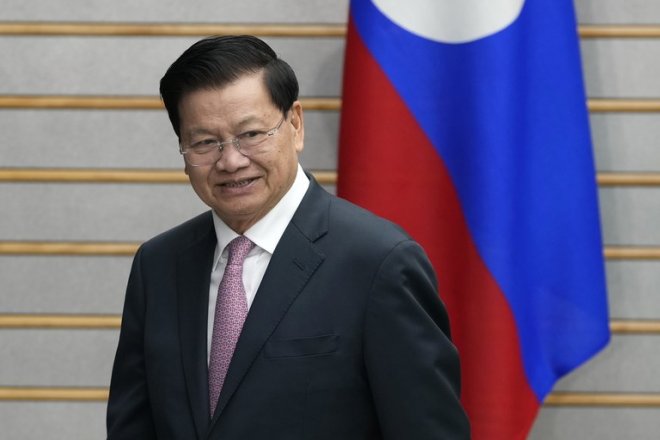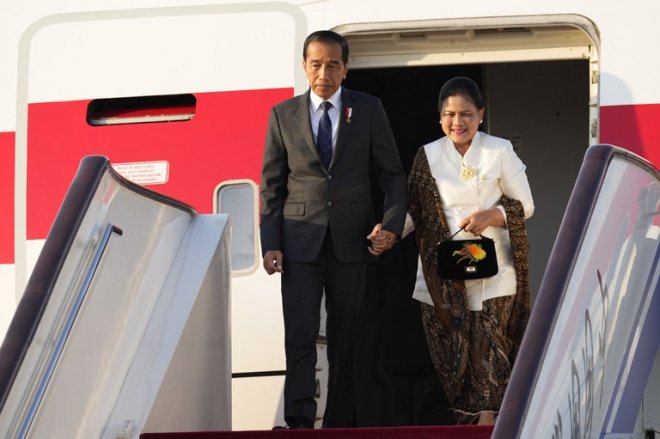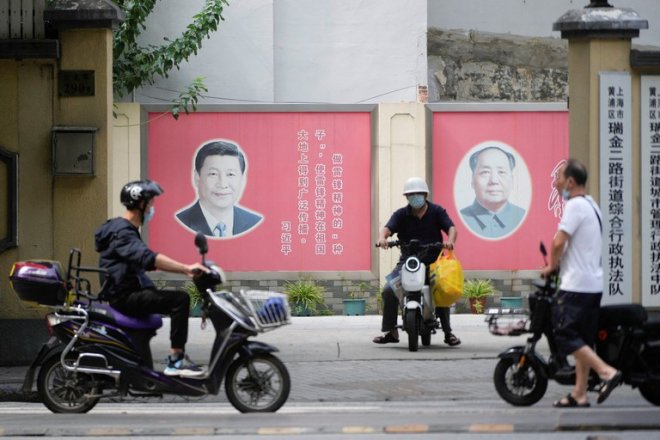Myanmar's resistance says it has cracked junta’s anti-drone jammers
Resistance fighters in Myanmar are increasingly relying on drones to attack Myanmar military forces now that they have cracked the junta’s anti-drone jammers, rebel groups and drone operation groups said.
The performance of the drones has also improved significantly, said Ko Nyein, who is in charge of a rebel drone force called Cloud Wings in Kayin state, in eastern Myanmar.
“Our drones can now carry heavier payloads, fly higher and further, and penetrate the junta’s jammers,” he said. “We now can use our drones widely in many military columns across Myanmar.”
Rebel forces conducted about 642 drone attacks on junta soldiers in 2022, according to three drone forces in Kayin and Kayah states and in Sagaing and Magway regions.
The use of drones has increased this year, militia groups operating under the shadow National Unity Government said, but could not provide details, citing security concerns or sensitivity regarding their military matters.
None of the groups has yet issued figures for the number of drone attacks this year, however.
People’s Defense Forces, or PDFs – bands of ordinary citizens who have taken up arms against the military following the 2021 military coup – and ethnic militias have turned to modern-day warfare technology to battle junta soldiers who have installed machine guns and anti-drone defense equipment at important military bases, drone operation personnel said.
At first, the rebel fighters relied on handmade weapons, including hunting rifles called tumees, launchers and bombs against the national military.
They are using more attack drones that can drop bombs now that they have overcome the junta’s anti-drone defense system, PDF personnel said.
The shadow National Unity Government, made up of former civilian leaders and anti-junta activists, has distributed more than 400 attack drones to loosely controlled militia groups, said Maung Maung Swe, deputy secretary of the NUG’s Ministry of Defense.
“We are aware of the strengths and weaknesses of their [the junta’s] drones and can now take them down,” he told RFA. “Because we know the frequency of their jammers, it is no longer difficult for us at all to penetrate them across the country.”
Cost of bombs
The Cloud Wings drone force formed in Kayin state in March has conducted more than 100 anti-junta drone operations, said Ko Nyein.
But the high cost of various bombs attached to the drones has been a challenge, Ko Nyein said.
“If we talk about the main difficulty we face, it is the cost of the bombs,” he said.
On Sept. 1 and 2, the Cloud Wings drone unit twice attacked the police station and the municipal hall in the city of Kyainseigyi, dropping 107-mm bombs.
![]() Members of the anti-junta drone militia group Federal Wings listen to instructions from their commander in an undisclosed location in Myanmar, Sept. 4, 2023. Credit: Federal Wings
Members of the anti-junta drone militia group Federal Wings listen to instructions from their commander in an undisclosed location in Myanmar, Sept. 4, 2023. Credit: Federal Wings![]()
The next day, the Federal Wings—another resistance group that uses drones to attack junta troops and facilities—bombed the police station in Kayin’s Myawaddy city, killing five people, including the Myawaddy district administrator and the acting commander of the junta’s Light Infantry Regiment No. 175, and injuring an unknown number of others.
These drone attacks have become so strategic as to threaten the junta, said Capt. Kaung Thu Win, who joined the nationwide Civil Disobedience Movement of individuals who quit their government-related jobs to protest the junta.
“In the past, the military troops were terrified by the landmine attacks when they set out for battles,” he said. “At the moment, the weapons that scare them the most are our drones because they are used in defensive as well as surprise attacks day or night.”
“The bombs dropped by our drones significantly hurt the military troops, though they can’t wipe out an entire enemy unit,” he added.
Attack from a distance
The junta’s anti-drone equipment called Drone Guard is limited and many soldiers at bases do not know how to use it, Kaung Thu Win said.
On Sept. 11, junta troops stationed near Sagaing region’s Nat Yay Kan village in Chaung-U township were attacked by fixed-wing drones of the Civilian Defense and Security Organization of Myaung, another resistance group. They successfully penetrated military jammers that can cut off radio waves and stop drone control.
RFA could not reach junta spokesman Maj. Gen. Zaw Min Tun for comment on how the military is handling drone attacks by the People"s Defense Forces.
“As far as the drone threats are concerned, they can attack our troops from a distance that we can’t see,” said Thein Tun Oo, executive director of the Thayninga Institute for Strategic Studies, a pro-military think tank composed of former army officers.
“It’s sometimes hard to detect them,” he said. “We can be hurt because they can drop bombs in surprise, but if we can apply our defense systems precisely, we will be safe from these attacks.”
Military and political analyst Than Soe Naing said he believes that drones play only a partial role in successful battles, however.
“The morale and fighting spirit of the soldiers on both sides of the battle play a more important role in determining a victory or loss,” he said. “A superb military strategy that includes weapons and ammunition, including drones, is important as well. Drones are only about one-third important in winning a battle."
Translated by Myo Min Aung for RFA Burmese. Edited by Roseanne Gerin and Malcolm Foster.
[圖擷取自網路,如有疑問請私訊]
The performance of the drones has also improved significantly, said Ko Nyein, who is in charge of a rebel drone force called Cloud Wings in Kayin state, in eastern Myanmar.
“Our drones can now carry heavier payloads, fly higher and further, and penetrate the junta’s jammers,” he said. “We now can use our drones widely in many military columns across Myanmar.”
Rebel forces conducted about 642 drone attacks on junta soldiers in 2022, according to three drone forces in Kayin and Kayah states and in Sagaing and Magway regions.
The use of drones has increased this year, militia groups operating under the shadow National Unity Government said, but could not provide details, citing security concerns or sensitivity regarding their military matters.
None of the groups has yet issued figures for the number of drone attacks this year, however.
People’s Defense Forces, or PDFs – bands of ordinary citizens who have taken up arms against the military following the 2021 military coup – and ethnic militias have turned to modern-day warfare technology to battle junta soldiers who have installed machine guns and anti-drone defense equipment at important military bases, drone operation personnel said.
At first, the rebel fighters relied on handmade weapons, including hunting rifles called tumees, launchers and bombs against the national military.
They are using more attack drones that can drop bombs now that they have overcome the junta’s anti-drone defense system, PDF personnel said.
The shadow National Unity Government, made up of former civilian leaders and anti-junta activists, has distributed more than 400 attack drones to loosely controlled militia groups, said Maung Maung Swe, deputy secretary of the NUG’s Ministry of Defense.
“We are aware of the strengths and weaknesses of their [the junta’s] drones and can now take them down,” he told RFA. “Because we know the frequency of their jammers, it is no longer difficult for us at all to penetrate them across the country.”
Cost of bombs
The Cloud Wings drone force formed in Kayin state in March has conducted more than 100 anti-junta drone operations, said Ko Nyein.
But the high cost of various bombs attached to the drones has been a challenge, Ko Nyein said.
“If we talk about the main difficulty we face, it is the cost of the bombs,” he said.
On Sept. 1 and 2, the Cloud Wings drone unit twice attacked the police station and the municipal hall in the city of Kyainseigyi, dropping 107-mm bombs.
 Members of the anti-junta drone militia group Federal Wings listen to instructions from their commander in an undisclosed location in Myanmar, Sept. 4, 2023. Credit: Federal Wings
Members of the anti-junta drone militia group Federal Wings listen to instructions from their commander in an undisclosed location in Myanmar, Sept. 4, 2023. Credit: Federal Wings
The next day, the Federal Wings—another resistance group that uses drones to attack junta troops and facilities—bombed the police station in Kayin’s Myawaddy city, killing five people, including the Myawaddy district administrator and the acting commander of the junta’s Light Infantry Regiment No. 175, and injuring an unknown number of others.
These drone attacks have become so strategic as to threaten the junta, said Capt. Kaung Thu Win, who joined the nationwide Civil Disobedience Movement of individuals who quit their government-related jobs to protest the junta.
“In the past, the military troops were terrified by the landmine attacks when they set out for battles,” he said. “At the moment, the weapons that scare them the most are our drones because they are used in defensive as well as surprise attacks day or night.”
“The bombs dropped by our drones significantly hurt the military troops, though they can’t wipe out an entire enemy unit,” he added.
Attack from a distance
The junta’s anti-drone equipment called Drone Guard is limited and many soldiers at bases do not know how to use it, Kaung Thu Win said.
On Sept. 11, junta troops stationed near Sagaing region’s Nat Yay Kan village in Chaung-U township were attacked by fixed-wing drones of the Civilian Defense and Security Organization of Myaung, another resistance group. They successfully penetrated military jammers that can cut off radio waves and stop drone control.
RFA could not reach junta spokesman Maj. Gen. Zaw Min Tun for comment on how the military is handling drone attacks by the People"s Defense Forces.
“As far as the drone threats are concerned, they can attack our troops from a distance that we can’t see,” said Thein Tun Oo, executive director of the Thayninga Institute for Strategic Studies, a pro-military think tank composed of former army officers.
“It’s sometimes hard to detect them,” he said. “We can be hurt because they can drop bombs in surprise, but if we can apply our defense systems precisely, we will be safe from these attacks.”
Military and political analyst Than Soe Naing said he believes that drones play only a partial role in successful battles, however.
“The morale and fighting spirit of the soldiers on both sides of the battle play a more important role in determining a victory or loss,” he said. “A superb military strategy that includes weapons and ammunition, including drones, is important as well. Drones are only about one-third important in winning a battle."
Translated by Myo Min Aung for RFA Burmese. Edited by Roseanne Gerin and Malcolm Foster.
[圖擷取自網路,如有疑問請私訊]
|
本篇 |
不想錯過? 請追蹤FB專頁! |
| 喜歡這篇嗎?快分享吧! |
相關文章
AsianNewsCast



















